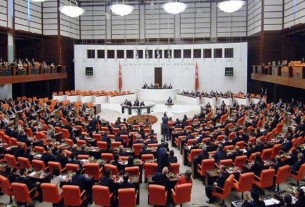The global copper market surged into turmoil after U.S. President Donald Trump announced plans to impose a 50% tariff on copper imports, triggering the metal’s largest single-day price jump since 1989. The move, revealed during a cabinet meeting and confirmed via Trump’s Truth Social account, sent commodity markets scrambling and raised serious concerns about supply chain stability and the future of U.S. electrification efforts.
Markets React: Record Price Spike
COMEX copper prices surged 13% following the announcement, driven by fears of restricted U.S. supply and rising demand for the metal critical to energy and data infrastructure. Citigroup called the moment “a watershed” for copper markets. By Wednesday, Chicago-London copper price spreads had widened 143%, reflecting both volatility and investor skepticism about the full implementation of the tariff.
Despite the President’s definitive tone, specifics remain unclear. Commerce Secretary Howard Lutnick previously suggested the tariffs would take effect by late July, but it is uncertain which copper products will be covered and whether key allies—such as Canada or Chile—might receive exemptions.
Strategic Supply Concerns
The tariff follows a February executive order initiating a Section 232 investigation into import threats to national security. The findings cited a concerning rise in copper import dependency, from near-zero in 1991 to 45% of U.S. consumption in 2024. Domestic production in 2024 totaled just 850,000 tonnes, while consumption hit 1.6 million tonnes.
China, which controls over half the world’s smelting capacity and four of the five largest refining facilities, looms large in the background. Policymakers compared the current situation to the rare earth supply risks the West overlooked for decades.
Infrastructure and Electrification at Risk
Copper is indispensable for energy transition technologies. Electric vehicles require up to five times more copper than internal combustion cars. Data centers and grid infrastructure also depend heavily on the metal. University of Michigan research warns that global mining cannot expand quickly enough to meet U.S. renewable goals, even before new tariffs.
Analysts expect the tariff could push U.S. copper prices to $15,000 per tonne—50% higher than the global average—raising the cost of power networks, consumer electronics, housing, and vehicles. According to Benchmark Mineral Intelligence, these added costs will largely fall on domestic consumers.
Import Surge and Supply Chain Scramble
In anticipation of trade restrictions, importers rushed to build inventories. U.S. copper imports reached 461,000 tonnes between January and April 2025, up sharply from the same period in 2024 and 2023. However, with ocean freight lead times stretching beyond 20 days, many shipments may not arrive before the 1 August deadline.
Europe, Chile, and Peru—major suppliers—are particularly exposed. Chile alone accounts for 70% of U.S. refined copper imports. Experts warn that any loss of U.S. market access could depress prices elsewhere and strain South American economies already under fiscal pressure.
Domestic Industry Benefits, But Limitations Persist
The tariffs offer short-term gains for U.S.-based miners. Shares of Freeport-McMoRan rose 5% following the announcement. Yet even domestic producers have urged caution, warning that tariffs alone cannot substitute for long-term investment in mining and smelting capacity.
Despite exporting 843,000 tonnes of copper in concentrates and scrap, the U.S. still imported 720,000 tonnes of refined cathodes in 2024 due to inadequate smelting capacity. Reviving shuttered facilities like the ASARCO Hayden smelter would require significant capital and time—well beyond current electoral cycles.
Geopolitical and Economic Risks
The 50% levy comes amid a broader wave of protectionist measures. The administration recently imposed tariffs on 14 countries and floated duties as high as 200% on pharmaceutical imports, while signaling future actions on semiconductors and critical minerals.
Analysts see this as part of a wider strategy to reshape global trade and restore domestic production. However, copper’s complex supply chain and long development timelines cast doubt on whether this can be achieved within a decade.
“The goal may be self-sufficiency, but that’s a multi-decade journey,” noted analysts at Jefferies.
Conclusion
Trump’s tariff marks the most significant disruption to U.S. copper trade in decades. With electrification demand surging, infrastructure projects mounting, and global supply chains already under strain, the policy introduces profound risks and unanswered questions. Until more details are released, global markets and industries remain in limbo.
As one European smelter put it:
“As usual [with Trump], there are still some big unknowns.”



